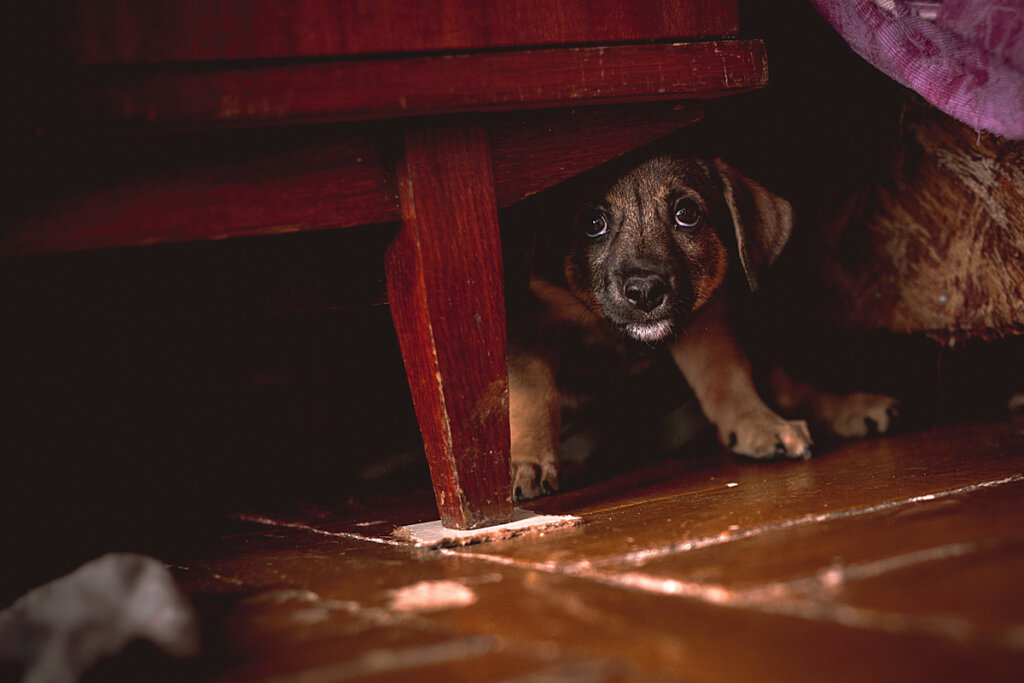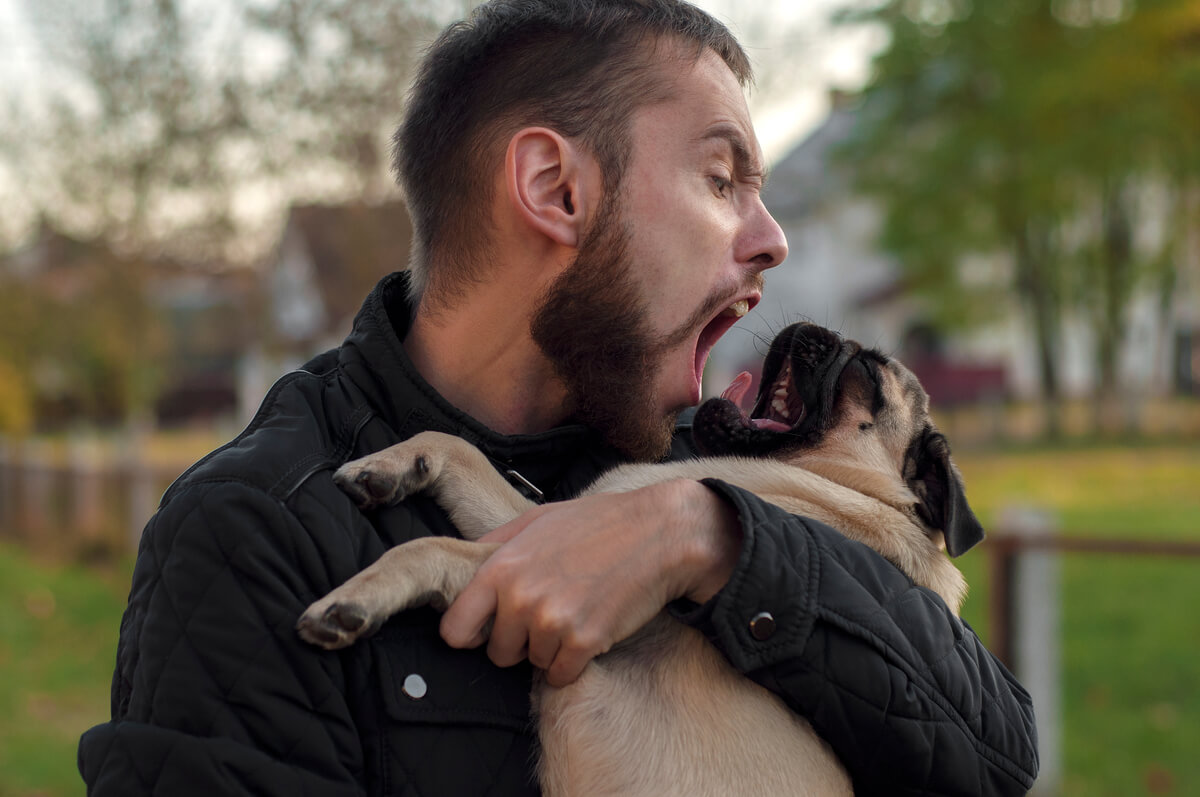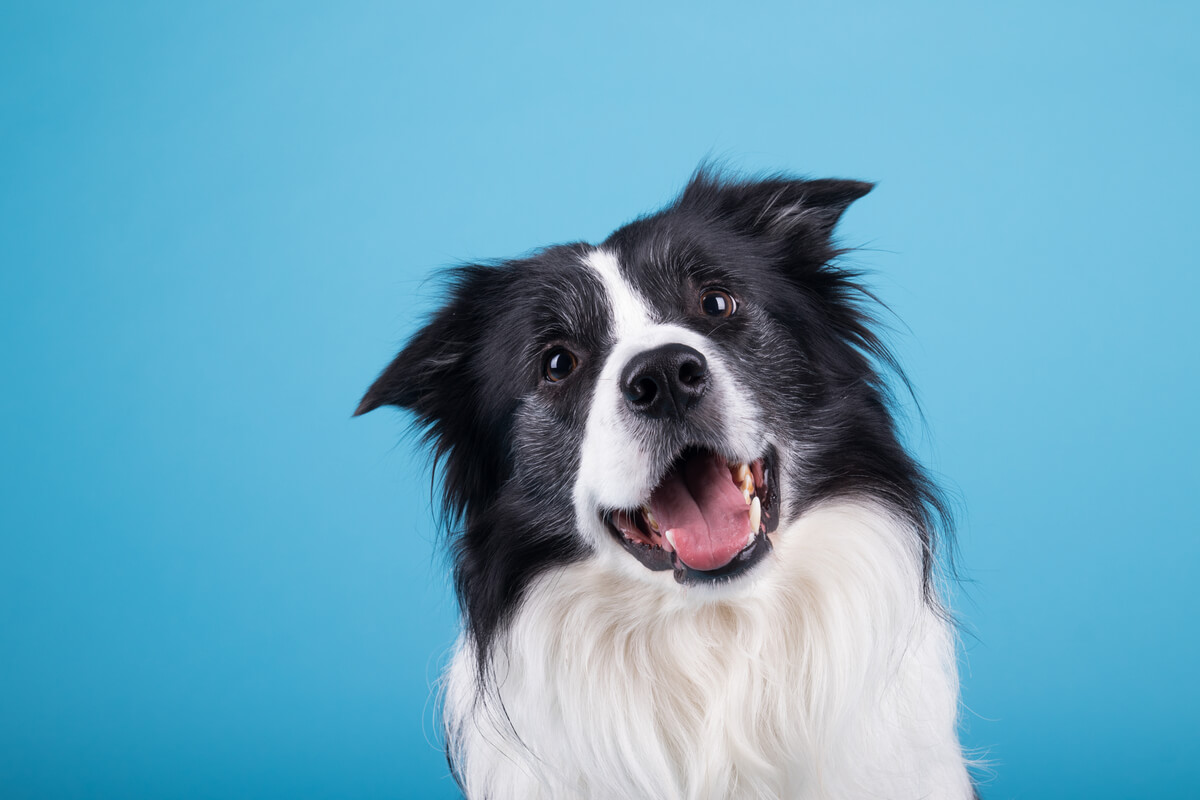What to Do if My Dog is Afraid of Me?

Welcoming a dog into the home is always a cause for celebration, but unfortunately, some dogs arrive with a painful past that seriously affects their relationship with humans. In these cases, it’s normal for you to ask yourself: what do I do if my dog is afraid of me?
Whether the animal arrives at your home already fearful or if it acquires it while it’s with you, don’t worry, you can help it lose it. Here are some tips to help you achieve this goal.
Why is my dog afraid of me?
Fear is acquired, generally, as a result of a bad experience. In the case of canids, it can be difficult to identify which stimulus has caused the fear response, especially if it’s something that — as members of another species — we have done without thinking about how the dog will interpret it.
For example, running towards the dog with open arms and smiling can be threatening to them, even if your intention is only to greet them enthusiastically.
However, not all dogs are equally sensitive to fear. The acquisition of phobias is influenced by 2 factors:
- Learning: both a traumatic experience and poor socialization in puppyhood can cause the dog to develop a phobia. There are also cases where the dog receives an upbringing based on punishment and violence.
- Genetics: some dogs are more fearful than others. Fear is something that dogs are highly likely to inherit – in fact, there’s a 50% chance that a puppy will inherit it if the mother is fearful, studies indicate.
When the object of your dog’s fear is you, the most normal thing is to worry and wonder what to do about it. The first step will be to identify why your dog is suddenly afraid of you.

An underlying cause
It’s possible that, due to something you didn’t control, you have induced fear in your dog. An example could be that you accidentally stepped on it, or that they associate you with another bad experience because you happen to be in the same place that it happened. If it’s a sudden change in behavior, then there may be another underlying cause, such as an illness. In that case, consult your vet to rule it out.
My dog is afraid of me for scolding him
If, after a reprimand, your dog begins to show signs of fear towards you, you need to ask yourself if you may be scolding them in a disproportionate way, or in a way that confuses them. It’s important to try to understand how the dog processes and understands what we say to them, otherwise you will only generate fear in them – and the misbehavior won’t disappear.
An example of this is scolding the animal a long time after it did something wrong. For them, it will be an irrelevant and confusing reprimand.
My dog is scared of me since I hit them
Raising a dog, especially one that comes with sequelae from its previous life, can be tiring and frustrating. However, physical punishment should never be an option. In addition to not being effective in the long term, it establishes a series of dynamics between you and your dog that, obviously, will never be healthy or positive.
How to remove fear from my dog?
Once you have identified the cause of the fear, you can begin to rebuild your relationship with your dog. Be patient though, it won’t happen overnight. Keep the following tips in mind.
Avoid what has created the fear
In this case, as the object of their fear is you, you must change your behavior when you’re with your dog. There are several ways not to expose the dog to what scares them about you. Speak to them in a soft voice, don’t approach them abruptly, or even ignore them so that they see that you aren’t a threat.
Exposing them to fear progressively
Once your dog tolerates your presence without intense reactions, it’s time to start exposing them to their source of fear gradually. All the behavior that you’ve worked on before — like the gentle approach — you should use to get to a point where the dog isn’t afraid of you at all.
For example, if they shrink when you reach out to them, go slowly and get a little closer each day.
Reward them
On the other hand, to speed up the process, it’s good to work with something called counterconditioning. With this technique, you can associate a pleasant stimulus with what the dog is afraid of. Every time they make progress in tolerating you, you can reward them with food. In this way, they will progressively associate you with positive things.

A dog expresses fear in easily identifiable ways: signs of nervousness, tremors, and even involuntary urination. Submission positions are also common. These signs can cause distress, as no one wants to harm their loved ones, but, fear not, dogs have big hearts and are always ready to get along with you again.
All cited sources were thoroughly reviewed by our team to ensure their quality, reliability, currency, and validity. The bibliography of this article was considered reliable and of academic or scientific accuracy.
- Rehabilitate Dogs from Puppy Mill or Hoarding Case. (2018). Best Friends Animal Society. https://resources.bestfriends.org/article/rehabilitate-dogs-puppy-mill-or-hoarding-case
- How to Approach a Scared, Nervous or Worried Dog. (2015). Best Friends Animal Society. https://resources.bestfriends.org/article/how-approach-scared-nervous-or-worried-dog
- Berciano, C. D., & Jiménez, M. G. (2000). Tratamiento de un caso de fobia en un perro mediante contracondicionamiento. Psicothema, 187-191.